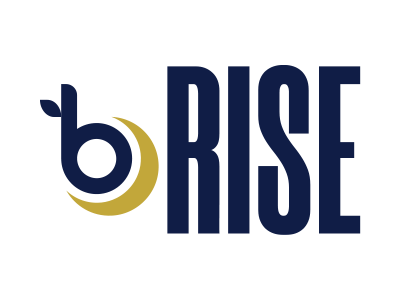
The first format that allows by IASB is single-step income statements. This kind of format is required reporting and present revenue and expenses into different sections regardless of realize or unrealized. The comprehensive income statement thoroughly highlights these details. It explains everything from the cost of goods sold (which translates to the cost of operating activities) to other unrelated incurred costs, such as taxes. In comparison, OCI consists of gains or losses that aren’t realized in the income statement. Large corporations with multiple investments in different countries often use this document and a consolidated statement to collectively report on their businesses.
Main Purposes of Financial Statements (Explained)
- Though they sound similar, there are certain differences, primarily in the level of detail they provide into a company’s financial situation.
- It represents the actual profit your company has earned during a specific period.
- My Accounting Course is a world-class educational resource developed by experts to simplify accounting, finance, & investment analysis topics, so students and professionals can learn and propel their careers.
- To compute income tax, multiply your pre-tax income by the appropriate state tax rate.
- One of the major shortcomings of the statement of comprehensive income is that it cannot forecast a company’s future success.
The statement of comprehensive income contains those revenue and expense items that have not yet been realized. It accompanies an organization’s income statement, and is intended to present a more complete picture of the financial results of a business. It is typically presented after the income statement within the financial statements package, and sometimes on the same page as the income statement. Contrary to net income, other comprehensive income is income (gains and losses) not yet realized. It reflects income that cannot be accounted for by the income statement. Some examples of other comprehensive income are foreign currency hedge gains and losses, cash flow hedge gains and losses, and unrealized gains and losses for securities that are available for sale.
- We note that Colgate’s Net income, including noncontrolling interests, is $2,586 million.
- In this article, we’ll review and help you understand what a statement of comprehensive income is.
- The opposite of comprehensive income is narrowed-down income or income from its main operation.
- The first is to realize profit or loss which is the actual profit or loss for the period.
- It also emphasises both current and accumulated expenditures, which are expenses that the firm has yet to pay.
Financial Statements Outline
For example, gains on the revaluation of land and buildings accounted for in accordance with IAS 16, Property Plant and Equipment (IAS 16 PPE), are recognised in OCI and accumulate in equity in Other Components of Equity (OCE). On the other hand, gains on the revaluation of land and buildings accounted for in accordance with IAS 40, Investment Properties, are recognised in SOPL and accumulate in equity as part of the Retained Earnings (RE). Whenever CI is listed on the balance sheet, the statement of comprehensive income must be included in the general purpose financial statements to give external users details about how CI is computed. Keep in mind, that this does not include any owner caused changes in equity. It only refers to changes in the net assets of a company due to non-owner events and sources. For example, the sale of stock or purchase of treasury shares is not included in comprehensive income because it stems from a contribution from to the company owners.
What Does Comprehensive Income Include?

This will usually occur to allow the SOPL to provide more relevant information or provide a more faithful representation of an entity’s performance. Whilst this may be an improvement on the absence of general principles, it might be argued that it does not provide the clarity and certainty users crave. In today’s complex business environment, understanding and reporting comprehensive income is essential for companies looking to provide a complete and transparent picture of their financial performance. By including both realized and unrealized gains and losses, comprehensive income offers valuable insights into a company’s statement of comprehensive income overall financial health and helps stakeholders make more informed decisions.

Add Operating Expenses

For example, sales revenues, gain on interest income, and gain on revaluation are records in the revenue sections. Statement of Comprehensive Income (Statement of Profit and Loss and Others Comprehensive Income) could be prepared and presented into two different formats that allowed by IASB (ias 1 presentation of financial statements. This article looks at what differentiates profit or loss from other comprehensive income and where items should be presented. PwC refers to the US member firm or one of its subsidiaries or affiliates, and may sometimes refer to the PwC network. This content is for general information purposes only, and should not be used as a substitute for consultation with professional advisors. Other comprehensive income is not listed with net income, instead, it appears listed in its own section, separate from the regular income statement and often presented immediately below it.
AccountingTools
Administrative documents that indicate the end balances of each account in the general ledger for a certain reporting period are known as trial balance reports. Making balance sheets is an important part of making an income statement since it’s how a business collects data for account balances. It will provide you with all of the end-of-period numbers you’ll need to make an income statement. Even though the income statement is a standard tool for measuring a company’s financial health, it falls short in key areas. The income statement includes both current earnings from sales and accounts receivables that have yet to be paid to the company.
- The statement should be classified and aggregated in a manner that makes it understandable and comparable.
- For the past 52 years, Harold Averkamp (CPA, MBA) has worked as an accounting supervisor, manager, consultant, university instructor, and innovator in teaching accounting online.
- The income statement includes both current earnings from sales and accounts receivables that have yet to be paid to the company.
- Let us understand this concept with the help of a basic statement of comprehensive income example.
- However, there is a general lack of agreement about which items should be presented in profit or loss and in OCI.
What’s the Benefit of the Comprehensive Income Statement?
It provides a comprehensive view for company management and investors of a company’s profitability picture. The statement shows net income as well as other comprehensive income. You still can call this term in your daily works; however, the official term to be called and used in official financial statements is Statement of Profit and Loss and Other Comprehensive Income. Statement of Comprehensive Income records both operating profit and loss and other comprehensive income which is not from normal operating activities. In the expenses section, the cost of goods sold, operating expenses, and loss of the exchange rate are recorded in the same trial balance sections.

What Should Be Included in a Statement of Comprehensive Income?

OCI consists of revenues, expenses, gains, and losses that are unrealized, and are excluded from net income. However, if there is no clear basis to identify the period or the amount that should be reclassified, the Board, when developing IFRS standards, may decide that no classification should occur. A revaluation surplus on a financial asset classified as FVTOCI is a good example of a bridging gain. The asset is accounted for at fair value on the statement of financial position but effectively at cost in SOPL. As such, by recognising the revaluation surplus in OCI, the OCI is acting as a bridge between the statement of financial position and the SOPL.
A positive balance in this report will increase shareholders’ equity, while a negative balance will reduce it; the change appears in the accumulated other comprehensive income account. Comprehensive income statements let businesses record the https://www.facebook.com/BooksTimeInc earnings they get from all sources. Unrealized income might come from non-owner sources, including gains due to foreign currency transactions, fluctuating asset values, and hedge financial instruments, among other financial events. Comprehensive income is the variation in the value of a company’s net assets from non-owner sources during a specific period.

